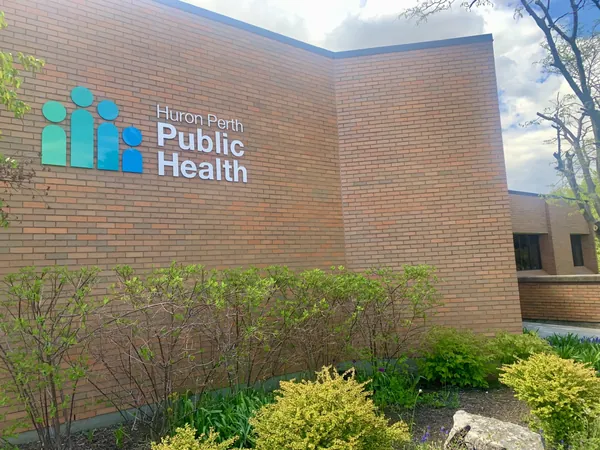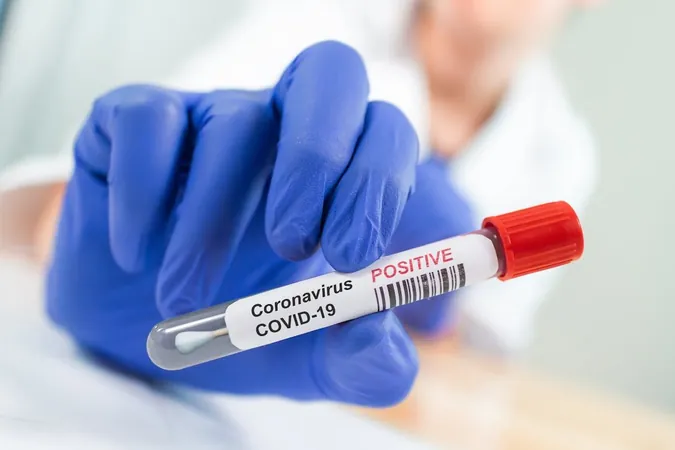
Alarming Rise in Cancer Cases Among Women and Younger Adults in the U.S. - What You Need to Know!
2025-01-16
Author: Charlotte
Introduction
A new report from the American Cancer Society (ACS) has revealed a troubling trend: certain types of cancer are becoming increasingly prevalent among younger adults and women. For the first time since the early 1900s, data shows that cancer diagnoses among women now exceed those among men.
Key Statistics and Insights
The ACS report, titled "Cancer Statistics," provides a comprehensive analysis of cancer rates in the U.S., examining data spanning from 1991 to 2021. This report shines a light on both positive advancements in cancer treatment and troubling increases in certain demographics.
"Cancer is currently the leading cause of death for individuals under the age of 85," stated William Dahut, the chief scientific officer for ACS. "This year, we expect over 2 million new cancer diagnoses and approximately 618,000 cancer-related deaths. To put it another way, that's like losing two mid-sized cities."
Stunningly, the statistics indicate that women under 65 are now more likely to receive a cancer diagnosis compared to men in the same age bracket. Historically, this demographic has been at a lower risk. The primary culprits behind this increasing prevalence in women are breast cancer and thyroid cancer. "Even though thyroid cancer rates have stabilized recently, it was recognized as the fastest-growing cancer during our study period," explained Rebecca Siegel, senior scientific director at ACS.
Shifts in Cancer Trends by Age and Demographics
The report also highlights a significant shift in cancer trends among various age groups. While over 65 remains the most critical risk factor for cancer, there is an alarming rise in cases among those younger than 65. Increased incidence rates have been noted particularly among those aged 50 to 64 and even more so among those under 50.
Significant racial and gender disparities in cancer statistics persist as well. Native Americans have been identified as being two to three times more likely than white individuals to be diagnosed with kidney, liver, stomach, and cervical cancers. Conversely, while Black women are diagnosed with breast cancer less frequently, they experience a higher mortality rate. They are also 50% more likely to die from cervical cancer than their white counterparts.
Prostate Cancer Trends and Mortality Rates
It’s worth mentioning that prostate cancer has witnessed a steep rise, escalating by 3% per year since 2014. Despite these ominous trends, the report does highlight encouraging developments: advancements in technology, early detection methods, and a reduction in smoking prevalence have contributed to a 34% decrease in cancer mortality since 1991, resulting in over 4.5 million cancer-related deaths being averted.
Conclusion and Call to Action
Such progress, however, is overshadowed by the concerning shift in cancer diagnoses from men to women. "Ending discrimination and inequality in cancer care across all populations is essential," emphasized Ahmedin Jemal, senior vice president and lead author of the study. "Addressing these disparities is critical to closing the existing gap and moving closer to ending cancer as we know it, for everyone."
As cancer rates continue to rise, it’s imperative for individuals to stay educated and proactive about their health. Regular screenings and adopting healthier lifestyles can potentially mitigate some of these risks. As the battle against cancer evolves, communities must work together to ensure equitable access to care for all.









 Brasil (PT)
Brasil (PT)
 Canada (EN)
Canada (EN)
 Chile (ES)
Chile (ES)
 Česko (CS)
Česko (CS)
 대한민국 (KO)
대한민국 (KO)
 España (ES)
España (ES)
 France (FR)
France (FR)
 Hong Kong (EN)
Hong Kong (EN)
 Italia (IT)
Italia (IT)
 日本 (JA)
日本 (JA)
 Magyarország (HU)
Magyarország (HU)
 Norge (NO)
Norge (NO)
 Polska (PL)
Polska (PL)
 Schweiz (DE)
Schweiz (DE)
 Singapore (EN)
Singapore (EN)
 Sverige (SV)
Sverige (SV)
 Suomi (FI)
Suomi (FI)
 Türkiye (TR)
Türkiye (TR)
 الإمارات العربية المتحدة (AR)
الإمارات العربية المتحدة (AR)